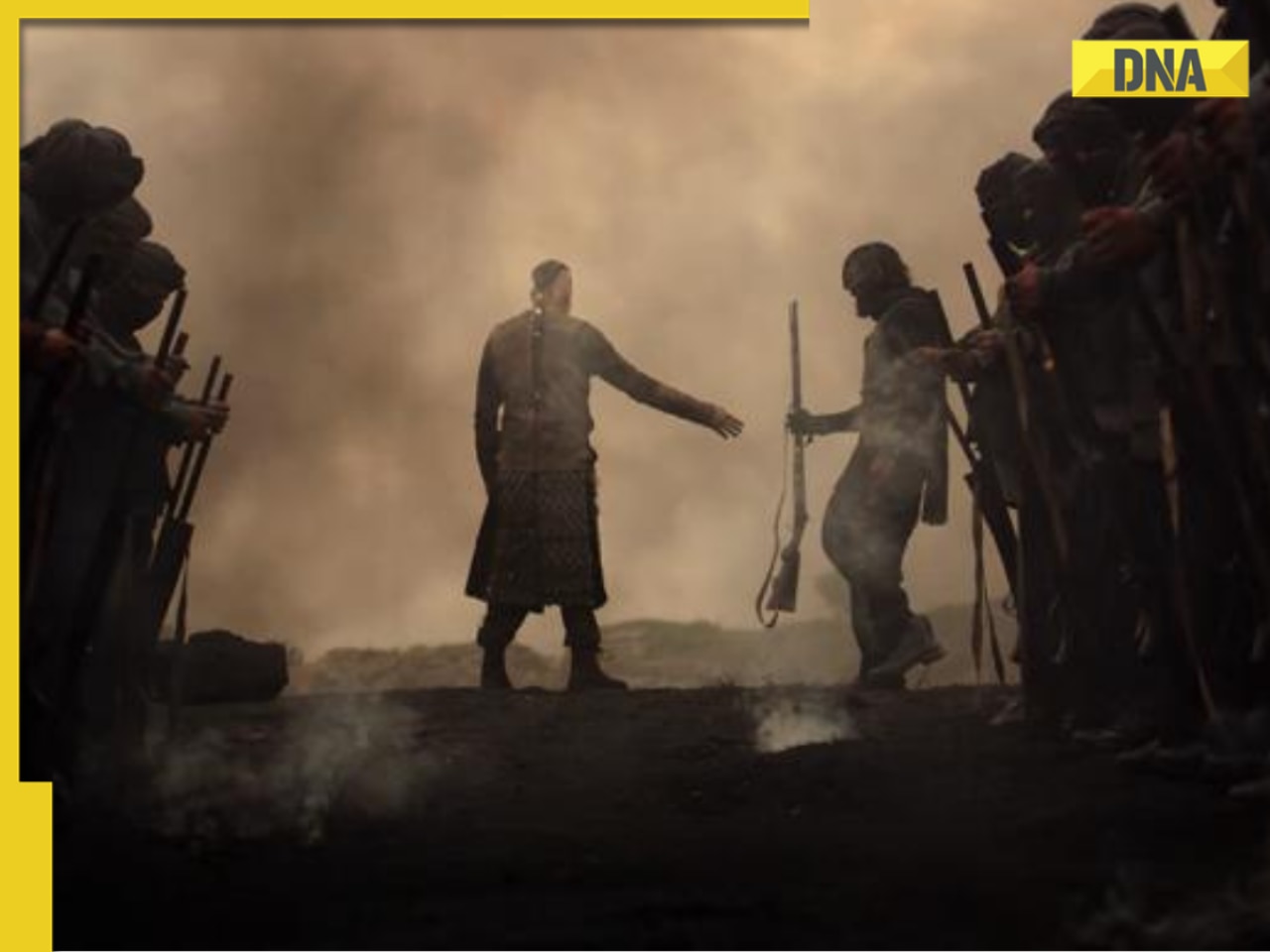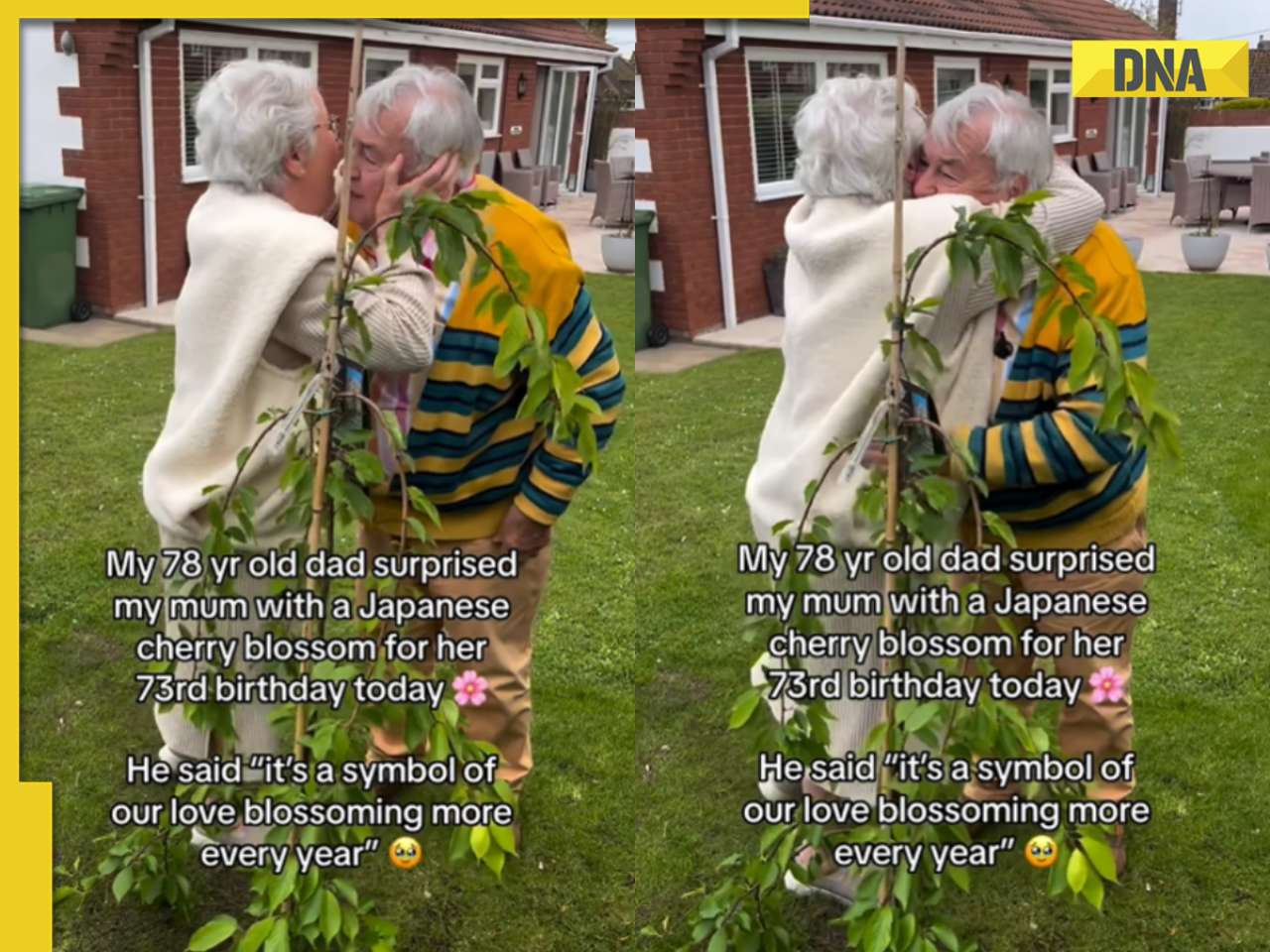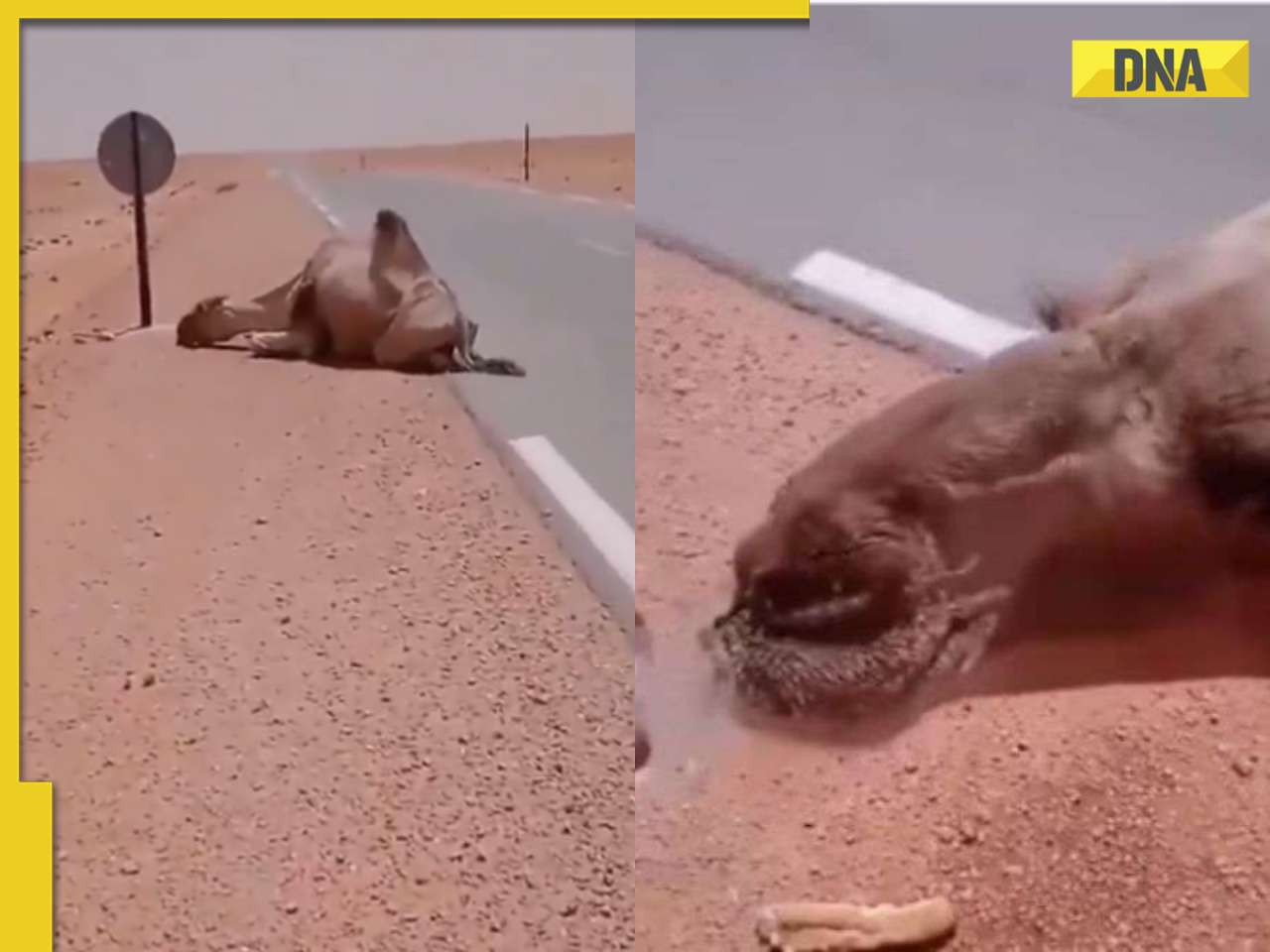Aiming to create a large urban graphic visible from the air, Mumbai artist Samir Parker has been using rooftops in Khar's Murugan Chawl as his canvas. He speaks to Rama Sreekant about his inspirations and how he got the local community to participate
Artists are going outside gallery walls to give new life to their work. Like Mumbai-based Samir Parker who has elevated urban art to a whole new level with his latest project, Roof/Tarp/City. "The project takes a highly visible, yet neglected part of the city's topography and transforms it through colour as the city prepares for the monsoon. The idea is to create a series of urban interventions visible from the air and satellite," says Samir, who has designed installations, exhibitions and publications for Bodhi Art, the London School of Economics, UNICEF and the Venice Biennale.
Samir wanted to use PVC Flex prints to create artwork across the rooftops of Mumbai's irregular settlements through his project, initially named Re-Flexing the City. His search for an ideal site for the installation -- defined by prerequisites like size of the area, access, visibility and community participation -- ended at Murugan Chawl in Khar, Mumbai.
But were the residents open to art on their roof? "For those who dwell in these irregular settlements, any outside interference is viewed with suspicion," he says. "I was fortunate to have found partners in Raja and Reshma Keshavan, who handled all the coordination and logistics, including records and accounts of material and labour."
Murugan Chawl is a cluster of 168 households, which has existed as a settlement for over 50 years. Originally the site of a graveyard and an illicit liquor operation, the community has been negotiating resettlement for the last 20 years. At present, it is surrounded by mid and high-rise apartments, which cost millions of dollars. "Blue tarpaulin or taar patri is usually used in irregular settlements as a protective shield during the monsoon. My idea was to use various colours available to create a large urban graphic," explains Samir.
Over the two weeks of surveying and installation, various teenage boys were formally involved. Eventually, Samir received help and support from almost all the teenagers of the area. "The community participation worked at every level; from spreading the word about the project, to employing maximum number of youth. It was completely managed and run by the residents, with about 15 teenagers formally involved. Using tarpaulin opened up a whole new approach to the act of image making as well. I had always intended for the image to emerge from some consensus of the participants. Our palette of colours was chosen for their brightness and contrast. Each rooftop became a single block of colour or pixel," he elaborates.
They worked in teams and conducted daily reviews, before moving to the next stage. "The abstract nature of the composition made various participants see it differently. We would discuss their views and the final graphic decisions were made on site in real time," he adds.
For Samir, the defining moment of this project was when the boys came up with concepts for the graphic forms and compositions. "There was a sense of locational pride that the satellite would now recognise their home," he says.
While the installation was completed by April 30 this year, Samir continues to document the engagement with the participants, the response of the chawl inhabitants and the reactions from the buildings around.
He believes urban art projects that involve communities can be empowering, they can subvert the exclusive mediocrities sold by the state and real estate developers. "The idea of an intervention of this scale is to make the city notice its own uniqueness. The urban landscape is in a constant state of change. For an artist, the inspiration is in the transient colours, textures, patterns and networks that are of this time and space. To draw from what exists in order to create interventions of fleeting irony or contrariness to the everyday notions of urban development or human endeavour."
Samir's next intervention is at a site near Bandra Reclamation. "But the windy conditions and an unrelated fire have hampered progress. This is a part of the learning process," he says.
![submenu-img]() Mukesh Ambani’s daughter Isha Ambani’s firm launches new brand, Reliance’s Rs 8200000000000 company to…
Mukesh Ambani’s daughter Isha Ambani’s firm launches new brand, Reliance’s Rs 8200000000000 company to…![submenu-img]() Sonali Bendre says producers called her 'too thin', tried to ‘fatten her up' during the 90s: ‘They'd just tell me...'
Sonali Bendre says producers called her 'too thin', tried to ‘fatten her up' during the 90s: ‘They'd just tell me...'![submenu-img]() Heavy rains in UAE again: Dubai flights cancelled, schools and offices shut
Heavy rains in UAE again: Dubai flights cancelled, schools and offices shut![submenu-img]() When 3 Bollywood films with same story released together, two even had same hero, all were hits, one launched star kid
When 3 Bollywood films with same story released together, two even had same hero, all were hits, one launched star kid![submenu-img]() Gautam Adani’s firm gets Rs 33350000000 from five banks, to use money for…
Gautam Adani’s firm gets Rs 33350000000 from five banks, to use money for…![submenu-img]() Diabetes tips: Avoid these 9 fruits to prevent blood sugar spike
Diabetes tips: Avoid these 9 fruits to prevent blood sugar spike![submenu-img]() 6 members of Kapoor family who failed in Bollywood
6 members of Kapoor family who failed in Bollywood![submenu-img]() Countries with highest number of vegetarians
Countries with highest number of vegetarians![submenu-img]() 9 most expensive Bollywood films that flopped at box office
9 most expensive Bollywood films that flopped at box office![submenu-img]() From NTR to Saif Ali Khan: Actors who played Ravana on screen before Yash in Ramayan
From NTR to Saif Ali Khan: Actors who played Ravana on screen before Yash in Ramayan![submenu-img]() DNA Verified: Is CAA an anti-Muslim law? Centre terms news report as 'misleading'
DNA Verified: Is CAA an anti-Muslim law? Centre terms news report as 'misleading'![submenu-img]() DNA Verified: Lok Sabha Elections 2024 to be held on April 19? Know truth behind viral message
DNA Verified: Lok Sabha Elections 2024 to be held on April 19? Know truth behind viral message![submenu-img]() DNA Verified: Modi govt giving students free laptops under 'One Student One Laptop' scheme? Know truth here
DNA Verified: Modi govt giving students free laptops under 'One Student One Laptop' scheme? Know truth here![submenu-img]() DNA Verified: Shah Rukh Khan denies reports of his role in release of India's naval officers from Qatar
DNA Verified: Shah Rukh Khan denies reports of his role in release of India's naval officers from Qatar![submenu-img]() DNA Verified: Is govt providing Rs 1.6 lakh benefit to girls under PM Ladli Laxmi Yojana? Know truth
DNA Verified: Is govt providing Rs 1.6 lakh benefit to girls under PM Ladli Laxmi Yojana? Know truth![submenu-img]() Remember Ayesha Kapur? Michelle from Black, here's how actress, nutrition coach, entrepreneur looks after 19 years
Remember Ayesha Kapur? Michelle from Black, here's how actress, nutrition coach, entrepreneur looks after 19 years![submenu-img]() Remember Heyy Babyy's cute 'Angel' Juanna Sanghvi? 20 year-old looks unrecognisable now, fans say 'her comeback will...'
Remember Heyy Babyy's cute 'Angel' Juanna Sanghvi? 20 year-old looks unrecognisable now, fans say 'her comeback will...'![submenu-img]() In pics: Arti Singh stuns in red lehenga as she ties the knot with beau Dipak Chauhan in dreamy wedding
In pics: Arti Singh stuns in red lehenga as she ties the knot with beau Dipak Chauhan in dreamy wedding![submenu-img]() Actors who died due to cosmetic surgeries
Actors who died due to cosmetic surgeries![submenu-img]() See inside pics: Malayalam star Aparna Das' dreamy wedding with Manjummel Boys actor Deepak Parambol
See inside pics: Malayalam star Aparna Das' dreamy wedding with Manjummel Boys actor Deepak Parambol ![submenu-img]() DNA Explainer: Why Harvey Weinstein's rape conviction was overturned, will beleaguered Hollywood mogul get out of jail?
DNA Explainer: Why Harvey Weinstein's rape conviction was overturned, will beleaguered Hollywood mogul get out of jail?![submenu-img]() What is inheritance tax?
What is inheritance tax?![submenu-img]() DNA Explainer: What is cloud seeding which is blamed for wreaking havoc in Dubai?
DNA Explainer: What is cloud seeding which is blamed for wreaking havoc in Dubai?![submenu-img]() DNA Explainer: What is Israel's Arrow-3 defence system used to intercept Iran's missile attack?
DNA Explainer: What is Israel's Arrow-3 defence system used to intercept Iran's missile attack?![submenu-img]() DNA Explainer: How Iranian projectiles failed to breach iron-clad Israeli air defence
DNA Explainer: How Iranian projectiles failed to breach iron-clad Israeli air defence![submenu-img]() Sonali Bendre says producers called her 'too thin', tried to ‘fatten her up' during the 90s: ‘They'd just tell me...'
Sonali Bendre says producers called her 'too thin', tried to ‘fatten her up' during the 90s: ‘They'd just tell me...'![submenu-img]() When 3 Bollywood films with same story released together, two even had same hero, all were hits, one launched star kid
When 3 Bollywood films with same story released together, two even had same hero, all were hits, one launched star kid![submenu-img]() Salman Khan house firing case: Family of deceased accused claims police 'murdered' him, says ‘He was not the kind…’
Salman Khan house firing case: Family of deceased accused claims police 'murdered' him, says ‘He was not the kind…’![submenu-img]() Meet actor banned by entire Bollywood, was sent to jail for years, fought cancer, earned Rs 3000 crore on comeback
Meet actor banned by entire Bollywood, was sent to jail for years, fought cancer, earned Rs 3000 crore on comeback ![submenu-img]() Karan Johar wants to ‘disinherit’ son Yash after his ‘you don’t deserve anything’ remark: ‘Roohi will…’
Karan Johar wants to ‘disinherit’ son Yash after his ‘you don’t deserve anything’ remark: ‘Roohi will…’![submenu-img]() IPL 2024: Bhuvneshwar Kumar's last ball wicket power SRH to 1-run win against RR
IPL 2024: Bhuvneshwar Kumar's last ball wicket power SRH to 1-run win against RR![submenu-img]() BCCI reacts to Rinku Singh’s exclusion from India T20 World Cup 2024 squad, says ‘he has done…’
BCCI reacts to Rinku Singh’s exclusion from India T20 World Cup 2024 squad, says ‘he has done…’![submenu-img]() MI vs KKR, IPL 2024: Predicted playing XI, live streaming details, weather and pitch report
MI vs KKR, IPL 2024: Predicted playing XI, live streaming details, weather and pitch report![submenu-img]() IPL 2024: How can RCB and MI still qualify for playoffs?
IPL 2024: How can RCB and MI still qualify for playoffs?![submenu-img]() MI vs KKR IPL 2024 Dream11 prediction: Fantasy cricket tips for Mumbai Indians vs Kolkata Knight Riders
MI vs KKR IPL 2024 Dream11 prediction: Fantasy cricket tips for Mumbai Indians vs Kolkata Knight Riders ![submenu-img]() '25 virgin girls' are part of Kim Jong un's 'pleasure squad', some for sex, some for dancing, some for...
'25 virgin girls' are part of Kim Jong un's 'pleasure squad', some for sex, some for dancing, some for...![submenu-img]() Man dances with horse carrying groom in viral video, internet loves it
Man dances with horse carrying groom in viral video, internet loves it ![submenu-img]() Viral video: 78-year-old man's heartwarming surprise for wife sparks tears of joy
Viral video: 78-year-old man's heartwarming surprise for wife sparks tears of joy![submenu-img]() Man offers water to thirsty camel in scorching desert, viral video wins hearts
Man offers water to thirsty camel in scorching desert, viral video wins hearts![submenu-img]() Pakistani groom gifts framed picture of former PM Imran Khan to bride, her reaction is now a viral video
Pakistani groom gifts framed picture of former PM Imran Khan to bride, her reaction is now a viral video







































)









)
)
)
)
)
)